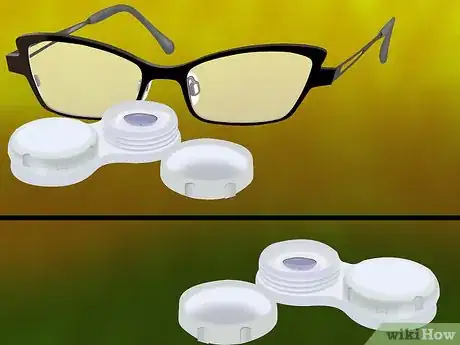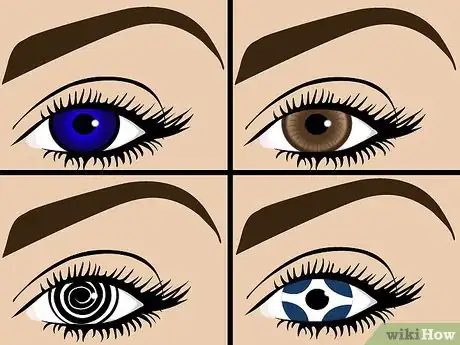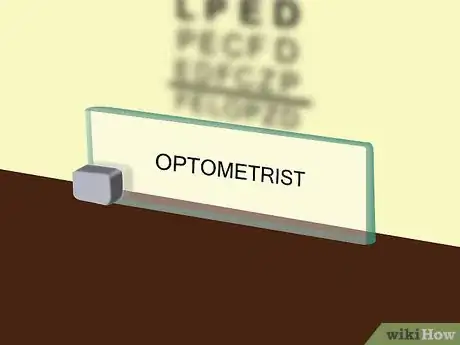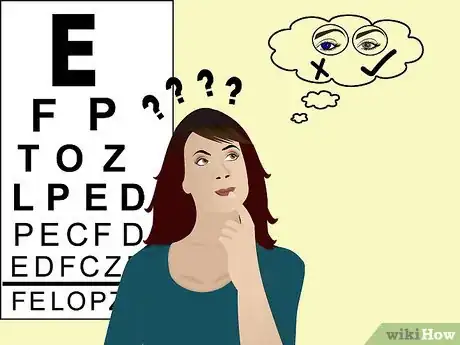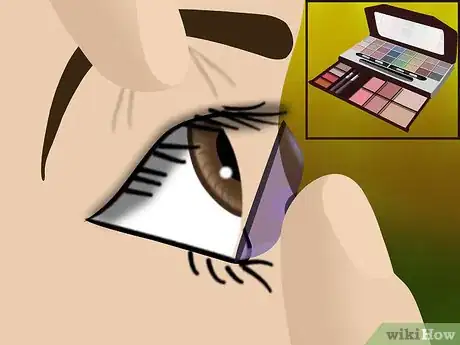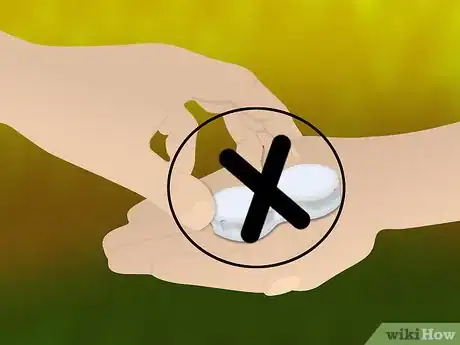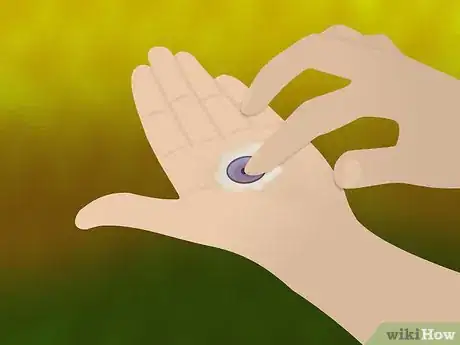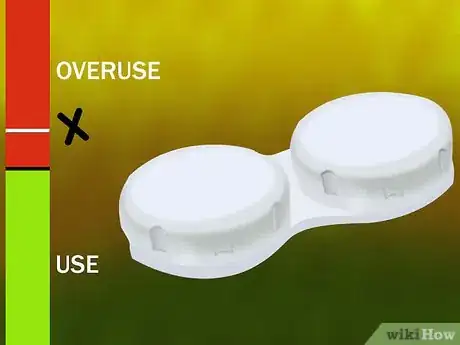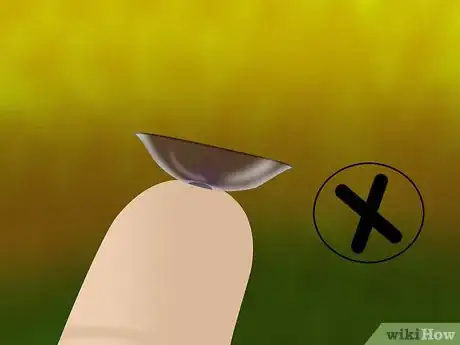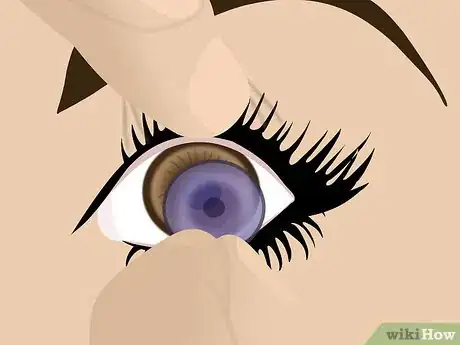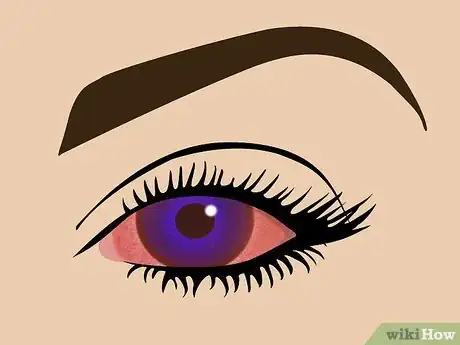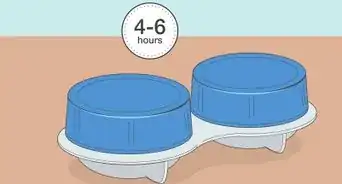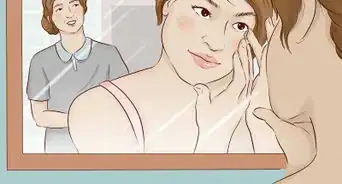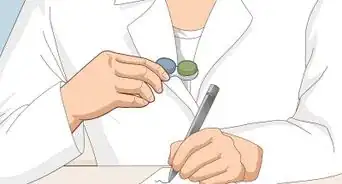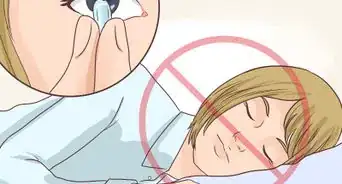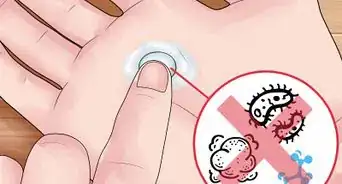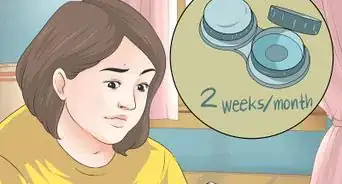This article was medically reviewed by Shaune Wallace, OD. Dr. Wallace is an Optometrist in Nevada with over 14 years of optometry experience. He received his OD from the Southern California College of Optometry in 2006 and is a member of the American Optometric Association.
This article has been viewed 247,694 times.
While there is sadly no magic way to change your eye color, colored contacts are the next best thing. Whether you want to achieve a natural-looking color for daily use or you want to spice up your halloween costume with crazy cat-eyes, this article will help get you started.
Steps
Obtaining Colored Contacts
-
1Determine what kind of contact lens to get. This will depend on whether or not you have pre-existing problems with your vision. There are two different kinds of colored contacts: Prescription and Plano.
- Prescription contact lenses are used on people who are near-sighted, far-sighted, or have an astigmatism. Prescription colored lenses change the color of your eye while also correcting your vision.[1] Color lenses will not be able to treat astigmatism, however, so your vision might be blurry if you have this condition.
- Plano contact lenses are purely for cosmetic purposes. These contact lenses do not alter your vision in any way.[2]
-
2Pick a color. You can either choose an everyday color that mimics the look of a natural eye, or spice up your halloween costume with patterned lenses.
- Everyday lenses come in a variety of colors, including blue, green, hazel, brown, and purple.
- Costume contact lenses come in all sorts of crazy colors and patterns like spirals, checkers, at-eyes, zebra, Xs, white-out, and even tie-dye!
Advertisement -
3Make an appointment with your optometrist. Both prescription and plano contact lenses are classified as medical devices by the FDA, so you will need to be given a prescription.[3]
-
4Ask your optometrist if colored contacts are right for you. Be aware that not everybody can safely wear contacts, as the ability to do so depends on the shape and health of your eye.
- Your optometrist will give you proper instructions on how to insert and take care of your lenses to avoid damaging them or harming your eyes.
Proper Use and Care
-
1Keep your lenses clean. Always wash and dry your hands before handling your contact lenses and keep your fingernails short to avoid scratching your eye when inserting them.[4]
-
2Insert your contact lenses before applying makeup.[5] Similarly, you should remove the lenses before washing off your makeup. This will avoid getting any makeup on your lenses.
-
3Don't share your contact lenses with others. Doing so can spread infections or particles from one eye to the other.[6]
-
4Clean and change your lenses regularly. Be sure to follow the instructions that have been given to you by your optometrist. Also, make sure that you use fresh solution every time you store your contact lenses. Never reuse your solution.
-
5Store your lenses in the proper case. Cases should be changed every three months.[7]
-
6Limit wearing your contacts to the length of time your eye-care professional has recommended.[8] Overuse can cause damage to the eye over time.
-
7Make sure you don't insert your lenses inside-out. Doing so won't damage your eyes, but it may be uncomfortable.[9] To make sure you are inserting it the right way, hold the contact lens on your finger and view it from the side to see which way it folds.
- If the top edge of the lens flares out then it is inside out.
-
8Be sure to take out your lenses before you go to sleep. Sleeping with contact lenses in your eye may cause irritation and dryness.
-
9Remove the lenses if you experience pain or irritation. If you experience eye redness, stinging, burning, or pain, this is a sign that something is wrong. Remove your lenses and stop using your contacts until you have talked to your optometrist.
Expert Q&A
-
QuestionCan the contacts be soft?
 Shaune Wallace, ODDr. Wallace is an Optometrist in Nevada with over 14 years of optometry experience. He received his OD from the Southern California College of Optometry in 2006 and is a member of the American Optometric Association.
Shaune Wallace, ODDr. Wallace is an Optometrist in Nevada with over 14 years of optometry experience. He received his OD from the Southern California College of Optometry in 2006 and is a member of the American Optometric Association.
Doctor of Optometry, Southern California College of Optometry Yes. The majority of color-altering contact lenses are soft contact lenses.
Yes. The majority of color-altering contact lenses are soft contact lenses. -
QuestionAt what age can a child begin wearing contacts?
 Shaune Wallace, ODDr. Wallace is an Optometrist in Nevada with over 14 years of optometry experience. He received his OD from the Southern California College of Optometry in 2006 and is a member of the American Optometric Association.
Shaune Wallace, ODDr. Wallace is an Optometrist in Nevada with over 14 years of optometry experience. He received his OD from the Southern California College of Optometry in 2006 and is a member of the American Optometric Association.
Doctor of Optometry, Southern California College of Optometry There is no minimum age for wearing contacts. A parent or guardian should consult with the optometrist about the child's readiness to take on the responsibility of caring for contact lenses.
There is no minimum age for wearing contacts. A parent or guardian should consult with the optometrist about the child's readiness to take on the responsibility of caring for contact lenses. -
QuestionCan you use any eye drop for your eyes while taking them out or no? If not what kind of eye drop would I need to buy?
 Shaune Wallace, ODDr. Wallace is an Optometrist in Nevada with over 14 years of optometry experience. He received his OD from the Southern California College of Optometry in 2006 and is a member of the American Optometric Association.
Shaune Wallace, ODDr. Wallace is an Optometrist in Nevada with over 14 years of optometry experience. He received his OD from the Southern California College of Optometry in 2006 and is a member of the American Optometric Association.
Doctor of Optometry, Southern California College of Optometry It is important to use eye drops that are safe to use with contact lenses. Typically, if the bottle is labeled "resetting drops" they will be safe to use with contacts. Also, preservative-free artificial tears are safe to use with contact lenses.
It is important to use eye drops that are safe to use with contact lenses. Typically, if the bottle is labeled "resetting drops" they will be safe to use with contacts. Also, preservative-free artificial tears are safe to use with contact lenses.
Warnings
- Since your pupil size constantly changes depending on the lighting, contact lenses might inhibit your vision at night when your pupil is larger than the space in your contact lenses.⧼thumbs_response⧽
- Don't wear contact lenses unless you have been given a prescription. Your optometrist will determine whether you can safely wear contacts based on the shape and size of your eye.⧼thumbs_response⧽
- Contact lenses may shift slightly when you blink, making it much more obvious that you are wearing colored lenses and temporarily blocking your vision.⧼thumbs_response⧽
- Visit your eye doctor immediately if you experience sudden loss of vision, persistent blurred vision, eye pain, infection, swelling, or other irritation.[10]⧼thumbs_response⧽
- Contact lenses might make your eyes more sensitive to light, so consider wearing sunglasses or a hat/visor to protect your eyes from the sun.[11]⧼thumbs_response⧽
References
- ↑ http://www.allaboutvision.com/contacts/colors.htm
- ↑ http://www.allaboutvision.com/contacts/colors.htm
- ↑ http://www.allaboutvision.com/contacts/colors.htm
- ↑ http://www.webmd.com/eye-health/caring-contact-lens
- ↑ http://www.webmd.com/eye-health/caring-contact-lens
- ↑ http://www.webmd.com/eye-health/caring-contact-lens
- ↑ http://www.aoa.org/x8024.xml
- ↑ http://www.webmd.com/eye-health/caring-contact-lens?page=2
- ↑ http://www.webmd.com/eye-health/caring-contact-lens
About This Article
If you want to change your eye color with colored contacts, start by visiting your optometrist, since you’ll need a prescription for most colored lenses. Explain to the optometrist which color you’d like, such as blue, green, or hazel for a natural look, or crazy and fun colors, like spirals, zebra stripes, or even tie-dye for fancy dress! Alternatively, if you have darker eyes, choose opaque colored tints, so the color actually shows. For more tips from our Optometrist co-author, including how to insert colored lenses safely, scroll down!
